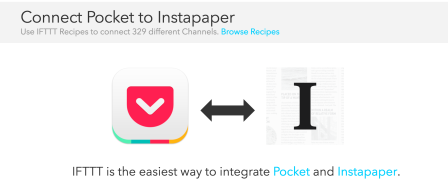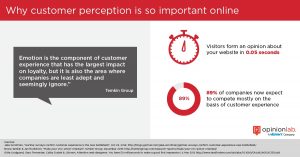
Being a digital marketing professional, I know how hard it is to find the best content on social media when there is so much noise. A question I am frequently asked is: what content curation tools can help me find and share the best content? What I’ve done in this article is provide a guide to the smartest content curation tools available.
So Many Tools, So Little Time
The content marketing revolution has resulted in so much content being generated and promoted that it hard to find the best material. This problem doesn’t only plague professional marketers; it has spread to almost every field and topic, making it even more confusing if you are not a social media expert.
In the last few years, there have been a number of solutions that have popped up to help readers find the best content being published within their networks. Not everyone has the time to keep up with all of these. I have organized them into a few groups to better offer perspective on which are best for you.
Different Models for Social Content Curation
These four types of curation are what I feel broadly represent the offerings on the market today. I define these as Tribal, Algorithmic, Outsourced and Self Service/Team Based.

For each of the types, I’ll give a brief overview of its characteristics and call out a few sample tools in that category. I’ll also describe what I feel are the key characteristics suited for this category along with pros and cons of this approach.
Tribal Curation
Tribal curation typically happens through affinity groups. These are collections of people that share something in common: profession, industry, location, etc. The barriers to enter these groups can vary, but they typically are self-organized and enforced by members peer review. The format is most often that of a souped-up discussion forum where people can post new topics and discussion happens in threads around that topic.
Sample Tools:
Reddit and it’s more specialized cousins, Inbound.org, Hacker News and Growthhackers.com.

Quibb, the members only sharing network for professionals. Content here focuses on the intersection of technology and business culture. There is an application process for membership, and an editorial team that helps promote content worth reading.
BeBee – Professional networking through personal interests. BeBee plays on the idea of social communities as places where knowledge workers “swarm”. It allows experts to organize small hubs called hives, centered around content sharing.
LinkedIn Groups – Focused forums created around areas of career skill, academic or professional membership. Web-based and backed by email notification, LinkedIn Groups are powerful and credible resources. Trust is high because providing identity is the cost of participation.
NextDoor – A personal favorite of mine, NextDoor has become a way to communicate with your neighbors in your immediate residential area and also surrounding neighborhoods. Because members have to verify residence through mail, you again have an exclusivity element. Content types include some you would suspect like local businesses and home services, but are not limited to anything.

Who it’s good for: People who trust in group identity and preferences. Happy to digest what the community surfaces. Confident that the community will weed out bad content. These can be great solutions for folks comfortable in their role/career but looking to be kept up to speed on new developments.
Pros:
- Mechanisms to let you see content by freshness and popularity.
- Allow you to see many different formats of content.
- Once you find a group that matches your sensibility, you are likely to hang around for a while.
Cons:
- There tends to be a fair amount of posturing in groups like this, and you can see certain archetypes play out such as oversharing, dominating discussions and see promotion.
- Finding the right group for you can take time, as it involves staying a while with each and trying them on before you know if you like the experience.
- Reading through group posts and deciphering opinion just to find out what content to read can be exhausting.
Algorithmic Curation
With a little help from your friends (and artificial intelligence), you too can find some of the best things out there. Algorithmic solutions are powering many of the services you are using today.
Sample Tools:
Facebook Newsfeed, Instagram – The service that needs no introduction. Consider that Facebook is trying to be the be-all, end-all destination for your entertainment and information needs. Similar to how Google owned search (It just works), Facebook wants to make your newsfeed be intelligent enough to fold in recommendations and smart-sorting, so that it satisfies your curiosities. While algorithms can be effective in making the system easier to use, the criticism that many experts have is that the content tends to get too homogenous over time and you miss out on a great deal of important content. Ditto Instagram.
Flipboard – The original magazine reader for tablets, this software curates the links shared by your contacts on Facebook and Twitter into topical news “sections” that you can flip through.
Prismatic (RIP) – Shuttered in the last year, Prismatic was one of my personal favorite solutions for some time as it combined elements of a the Flipboard style solution with machine learning so that it got smarter over time.

Nuzzel.com – Another personal favorite that was quite unique for a while, Nuzzel became smart about understanding your reading preferences based upon your Facebook and Twitter connections and what you engaged with in their application. They also built in some nice newsletter features so that you could use their platform to build your own audience that enjoyed the stories you share. I would love to see this one keep going, but I suspect that other products like Facebook are incorporating more of their ideas.

Who it’s good for: People who follow large numbers of content creators and sharers. Individuals in fast moving industries. Those who do not have a great deal of time to focus on what to read.
- Smart filtering based on topics.
- Automatic curation based on popularity.
- Some solutions learn your preferences over time.
Cons:
- Algorithms are a black box – You don’t know exactly how they work and are subject to their decisions.
- Algorithms are based upon things shared by people in your network already. Since networks tend to foster group-think, these can reinforce you seeing items popular within the group but not necessarily new.
Outsourced Curation
This category is where I consider that you as reader are deferring all control to a particular publication, host or expert to offer you their choice content picks. I find this to be one of the best ways to get introduced to new and interesting content, but its the one that puts you least in control.
Tools
I consider the main tools in this space to be email newsletters. The email newsletter has been a long staple of web culture, but it has seen a huge resurgence in recent years. I subscribe to several, including, Nextdraft (one of my favorites). Of course, I also have created my own newsletter, which you should subscribe to.
Who it’s good for: People that enjoy being taken on a journey through a new topic by an expert focused on that field. Those who relish in discovery of new content. Lazy people who want a predictable number of new items dropped in their inbox every week. Individuals looking to get slowly introduced to a new field of interest/study.
Pros:
- Delivered directly to your inbox.
- Curation is done for you.
- New content almost guaranteed.
Cons:
- You are subject to the perspectives and passions of your host.
- Depending upon the outlet, there is not always a way to offer meaningful feedback on what content you like or not.
Self-Service and Team Curation
This category represents the needs of individuals with an ongoing need for content to fuel their work and creativity. Often they demand a level of control over their tools that drives a more “self-service” working model. In other cases, they team with similar power-users that quickly digest, curate and repackage what they read for others in the group. Tools in this category offer a different level of functionality for a more demanding user, but with some tradeoffs.
Tools:
Feedly.com – Feedly came to fame as the product that picked up where the late Google Reader left off. A place to curate RSS feeds from websites you love, Feedly has become a very popular service for curating collections of sites and feeds for your audience. In the past, one of my teams used Feedly Shared Collections to curate a large collection of our employee blogs; you can see the video describing our use case at their website.
Pocket and Instapaper are two insanely popular “read later” services that also allow curators to share their wares with an audience. I’ve actually enjoyed both services over the years and use a service called IFTTT (If This Then That) to keep them in sync.

Paper.li – An amazing service that allows you to create a web-based newspaper with a publishing staff of one, Paper.li has built a steady following. By allowing editors to create papers based upon the sources they follow already, Paper.li automates much of the acquisition of new content. Editors can also set their distribution preferences up once and the paper will automatically publish and promote itself at intervals. For power users, it can be integrated into your website with ease. Another great aspect of Paper.li is that it can scale to teams as well.
For an example of Paper.li in action, check out my daily Digital Marketer’s Toolbox.

Anders Pink – A very new product on the scene, Anders Pink (AP) is brought to you by the team that created Buzzsumo, only it provides more utility for any sort of team of knowledge workers. Organized around the concept of “briefings”, AP allows curators to build automated content feeds around extremely focused areas using keywords, influencers, websites and RSS feeds; it also allows them to filter out what they don’t want in the result set. You can subscribe to existing public briefings or create your own, for free!

Feel free to check out AP briefings I created for myself that I’ve since made public:
Who it’s good for
Individuals and teams who have very deep areas of focus and an ongoing need to monitor areas of content publication. Consider product marketing teams, investment groups or research teams as prime examples here.
Pros
- Customization of criteria for what is collected
- A range of capabilities from automated to manual collection and curation
- Ability to add value to existing content for an audience around your specific focus area.
Cons
- Time intensive – requires ongoing investment in monitoring, curation
- Hands-on – Although there is quite a bit of automation capability, the curator needs to have an intimate understanding of how these tools work.
The Best Tool for Your Job
Choosing the solution that is right for you requires that you spend a bit of time considering how specific your needs are and what kind of effort you want to put in.
Deciding what toolset will fit your needs will mean considering what is the balance of process automation, editor attention, content freshness and editorial control.
I have attempted to provide a few suggestions for different roles, but don’t just take my word alone. I encourage you to experiment with a few of these tools in order to find the best solution for you and your team.
Is there another tool that you like for your curation needs that I haven’t mentioned? Share it in the comments!
This post was originally published at adammonago.com.
Digital & Social Articles on Business 2 Community(66)
Report Post






